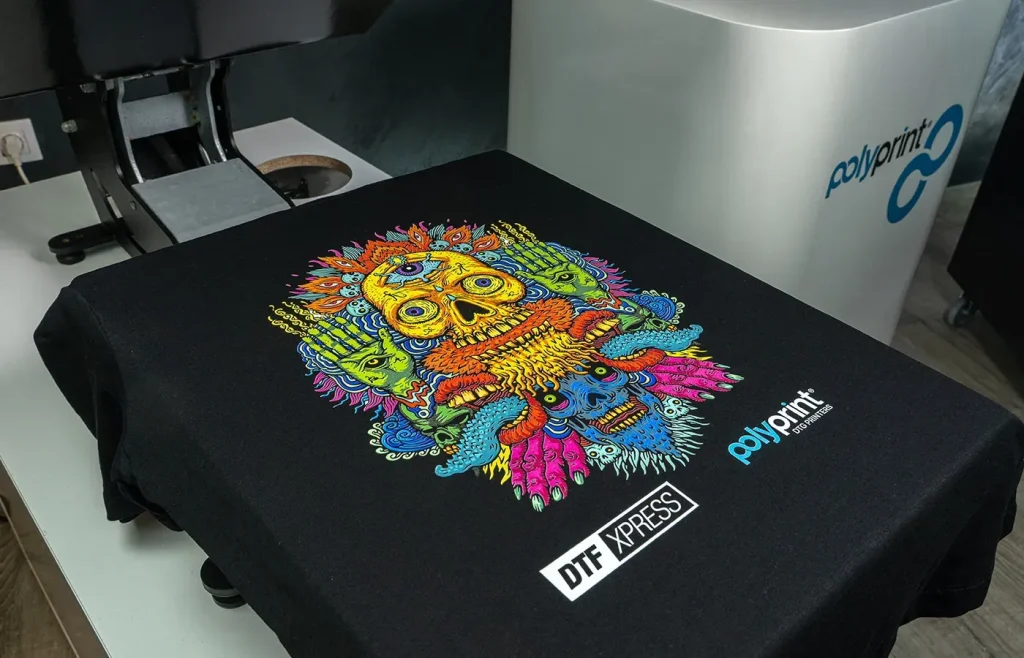In the rapidly evolving landscape of custom printing, DTF printing, or Direct to Film printing, is carving a niche for itself as a modern solution that rivals traditional printing methods like screen printing. This innovative approach allows for the application of vibrant, high-quality designs onto various fabrics without the extensive setup times associated with conventional techniques. As businesses seek efficient and cost-effective ways to produce custom apparel and promotional items, the advantages of DTF printing become increasingly appealing. Not only does it streamline the production process, but it also offers unparalleled versatility across different materials. In this guide, we will delve deeper into the nuances of DTF vs traditional printing to help you determine which method best suits your business needs.
Direct to Film printing, often referred to as DTF, provides a contemporary alternative to traditional printing methods, including classic techniques like screen printing. As the demand for personalized and high-quality printing rises, entrepreneurs are reevaluating their choices within the realm of printing technologies. Alternative terms such as printed film transfer and digital film printing are entering the conversation, revealing a growing trend towards more efficient production methods. In this exploration of DTF versus older printing practices, we will uncover the unique benefits that DTF brings to the table, while also comparing its performance against the long-established methods familiar to many as screen printing.
Understanding DTF Printing: A Modern Approach to Customization
Direct to Film (DTF) printing has revolutionized the world of custom printing by introducing an efficient method that allows businesses to produce high-quality designs with minimal setup. Unlike traditional methods, DTF uses a digital printing process that applies ink directly to a special film, which is then heat transferred onto fabric. This approach not only speeds up the printing process but also provides greater accuracy, allowing for intricate designs and vibrant colors that can be reproduced consistently.
One of the significant advantages of DTF printing is its versatility. This method works beautifully on various fabric types, including cotton, polyester, and blends. This adaptability makes it an excellent option for businesses looking to create customized apparel, promotional products, and personalized items. Moreover, DTF printing supports low production runs, making it ideal for small businesses or startups looking to test the market without a hefty investment in inventory.
Frequently Asked Questions
What is DTF printing and how does it compare to traditional printing methods?
DTF printing, or Direct to Film printing, is a modern technique that transfers high-resolution designs onto fabrics using films. It contrasts with traditional printing methods, such as screen printing, which require stencils for each color. DTF is efficient for small runs and custom designs, while traditional methods are more suited for bulk production.
Is DTF printing more cost-effective than traditional printing methods?
Yes, DTF printing often involves lower initial setup costs compared to traditional printing methods like screen printing. This makes DTF an appealing option for startups or businesses looking to produce short runs of custom apparel without incurring high overhead costs.
What are the advantages of using DTF printing over screen printing?
DTF printing offers several advantages over screen printing, including reduced setup time, the ability to produce high-quality prints on various fabrics, and flexibility for smaller orders. It allows for intricate designs to be transferred seamlessly, whereas screen printing can struggle with complex color layers.
Can DTF printing produce durable custom prints like traditional methods?
While DTF printing can produce high-quality custom prints, durability can vary based on materials and care instructions. Traditional printing methods, especially screen printing, tend to have a long-lasting quality, making them ideal for items expected to withstand heavy usage.
What types of fabrics can DTF printing be used on compared to traditional printing?
DTF printing is versatile and can be used on a variety of fabrics, including cotton, polyester, and blends. In contrast, traditional printing methods like screen printing may require additional equipment or techniques to accommodate different fabric types adequately.
How is the market trend shifting towards DTF printing over traditional printing methods?
The market is increasingly favoring DTF printing due to its flexibility and capacity to meet diverse customer demands. With advancements in DTF technology and increasing acceptance in e-commerce, businesses are leaning towards DTF for customized solutions, while traditional methods remain popular for bulk orders.
| Aspect | DTF Printing | Traditional Printing |
|---|---|---|
| Quality of Output | Produces high-resolution, vibrant images without loss of detail. | Can struggle with intricate designs requiring multiple color layers. |
| Setup and Efficiency | Lower setup time, ideal for customized designs and small quantities. | Higher upfront work needed, can delay production for complex jobs. |
| Flexibility and Adaptability | Works on various fabrics, fulfilling diverse customer demands. | May require additional equipment for handling different fabrics. |
| Cost Considerations | Lower initial costs, potential for high customization. | More cost-effective for large orders due to economies of scale. |
| Market Trends and Indications | Growing acceptance in the market, especially in e-commerce. | Established but may face competition from newer technologies. |
Summary
DTF printing offers a modern, efficient alternative to traditional printing methods, making it an attractive choice for businesses looking to optimize their production costs and flexibility. DTF printing stands out due to its ability to produce high-quality, vibrant designs with minimal setup time. As the industry evolves and evolves, understanding the nuances between DTF and traditional techniques is crucial for businesses to remain competitive and meet diverse customer demands.



